Once your sales reps close that sale, they need to pass the customer to the customer success team and bring their focus back on new opportunities. That’s where establishing a sales-to-customer-success handoff is key: your customer needs to go through the onboarding process till they familiarize themselves well enough with your product or service and can work autonomously. However, if your customer success team is not on the same page with sales, that transition can become tedious and frustrating for the customer resulting in their loss of interest and possibly even early cancellation.
If you’re using Microsoft Teams internally and are looking for ways to establish a smooth sales-to-customer-success handoff, you’re in the right place. In this article we’ll share with you some ideas on how to organize it with Microsoft Teams.

Why is sales-to-customer-success handoff important?
Having a well-established sales-to-CS handoff process has various advantages. Let’s go through some of them.
Quicker customer onboarding
Your customer success team will have all the information they need about the new customer to organize their onboarding process. Knowing their background, internal struggles and expectations can help customize onboarding and make sure it goes fast and efficient.
Better customer retention
Establishing strong relationships with customers is key for a sustainable and successful business. And it starts as soon as they sign a contract with you. So, you want to make sure you ‘hold their hand’ throughout the first couple of weeks or months. This will determine their first impression of you and help avoid loss of interest in your product/service and, subsequently, early cancels.
Expansion and upsell
This will result in increased trust in your company, and a possibility to expand the product or service you offer to another department or the entire organization as well as upsell new solutions you’re building.
Repeated sales
Finally, a happy customer is a loyal customer. When your customers are well cared for, they will want to continue doing business with you and bring repeat sales.
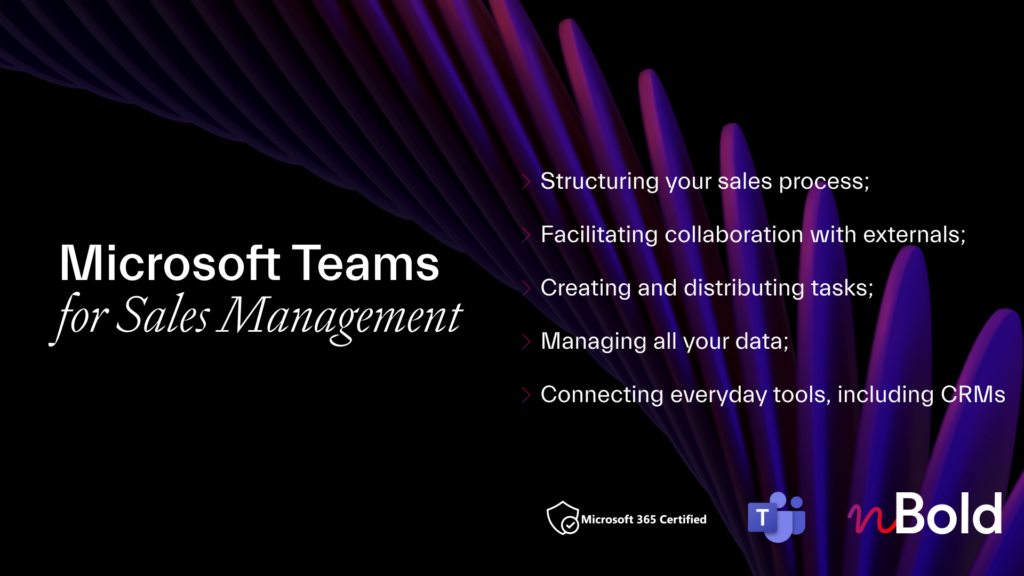
White Paper: Microsoft Teams for Sales Management
- How to use Microsoft Teams for Sales Management
- Create Teams templates for your sales processes
- How to connect Salesforce with Microsoft Teams

How to organize sales-to-customer-success handoff in Microsoft Teams
Now let’s walk through the way you can set up this process in Teams. We’ll show you a few examples that you can adapt to your unique business needs.
1. Create a team for each new customer
To make sure each customer is addressed properly the best practice is to build a separate team for each. This way you and your team will have a workspace dedicated entirely to the client that contains all the information about them.
It’s important to add to the team the members of the sales team who worked on closing the deal with the customer. This is where they will share with the customer success team all the data they need to understand the customer’s profile, their needs, requirements, and expectations.
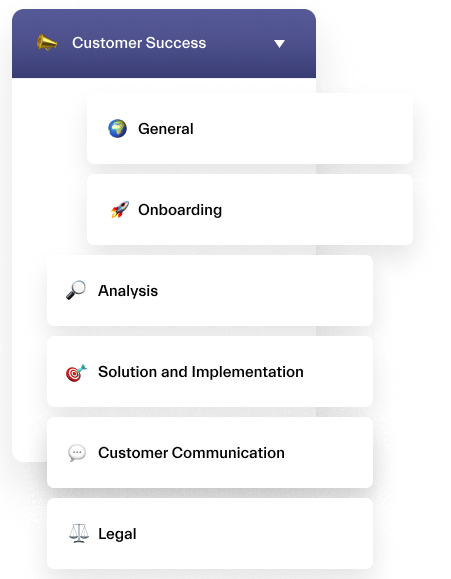
Here’s an example of a team you can create for customers:
- Customer information
- Onboarding
- Analysis
- Planning
- Issues
- Customer communication
- Solution and implementation
- Legal
You can create a shared channel for customer communication and invite key representatives of the company. This way, they can always communicate with you whenever needed. At the same time, they won’t have access to the other channels, so you don’t have to worry about data leaks.
2. Add necessary data and resources
Now, let’s provide your team with all the data and resources they need to successfully onboard a new customer and build a customer relationship.
Key customer information
Make sure your customer success team gets key customer information from sales. That includes:
- Record information of the main contacts
- Company type, industry and size
- Number of users of the product/service you provide
- Legal information (type of contract, its length, billing details, etc.)
- Existing tools in use (if needed)
You can store this information in a tool that you use for these purposes. If you’d like to use Microsoft 365 tools for that, we recommend Lists. It’s a system of record that allows you to structure and retain important data.
Sales’ findings
For a smooth sales-to-customer-success handoff the sales team needs to document well all their findings about the customer and then pass them to the customer success team. This information should be stored in the team in Microsoft Teams and be visible and easily accessible.
You can document in a Word file all the customers’ requirements, current issues they’re having and their internal processes relevant for your business. Add this document as a tab in the right channel. You may also want to use Wiki tab for those purposes.
Guidelines and file templates
It will be a good idea to provide your team with guidelines that they can follow to properly onboard a new customer and follow up with them.
You can do so using SharePoint sites that you can transform into your own intranet. Add important documentation, tips, links, resources – all your team needs to work on establishing strong customer relationships.
You may also want to add some document templates, for example for reports and follow-ups.
Tasks
Defining all the tasks your sales and customer success team need to complete to prepare a smooth handoff will help them stay organized and consistent. It will also clear out the doubts on who’s responsible for what and ensure both teams are on the same page about the next steps.
Planner is a great task management tool for that purpose. Prepare the tasks for your team – that can be setting up internal meetings to pass key information from sales to CSM, meetings with the customers, scheduling emails, preparing educational resources, following up, etc.
Then, add this plan as a tab to the corresponding channel in your team and make sure to assign the tasks to the right people. Add notes, checklist and timelines and attach links and files if needed.
In the same fashion you can use another project management tool and connect it with Microsoft Teams.
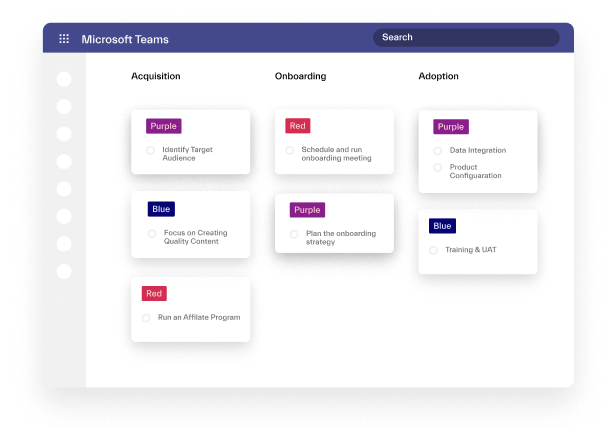
4. Schedule meetings
Microsoft Teams is perfect for establishing regular communication bother internally and externally. You can leverage Channel Calendar app to set up team meetings. This way, all the team events will appear in the calendar which is available for all team members.
You can also add Channel Calendar to the shared channel for customer communications and use it to schedule recurring meetings. That can be relevant for their onboarding and monthly/quarterly follow-ups.
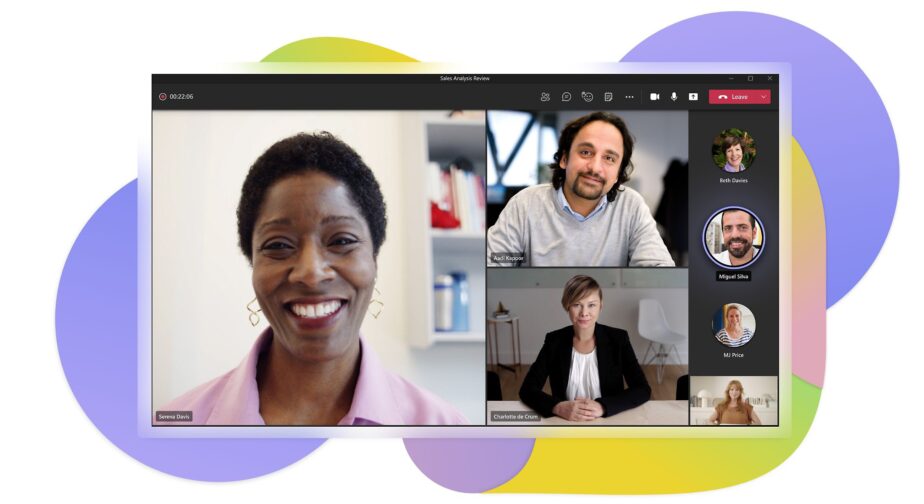
Scale the sales-to-customer-success handoff process with nBold
Now, in order for it to work, you’d need to repeat this process over again for each new customer. That would mean closely tracking the deal stage with the sales team in the CRM you use and preparing a new workspace in Microsoft Teams in due time to start the handoff and onboarding.
Doing so manually each time can be extremely time consuming and inefficient. But there is a way to automate this process with nBold.
Here’s how it works:
1. Create the original team

This is the team that you will use as a template. Add the channels you need, upload key documents and files, create tabs with your most-used apps, including your system of record, task management tool, document library, guidelines, etc.
You can also add the owners and members to the original team. These people will be automatically added to all new teams created from this original team.
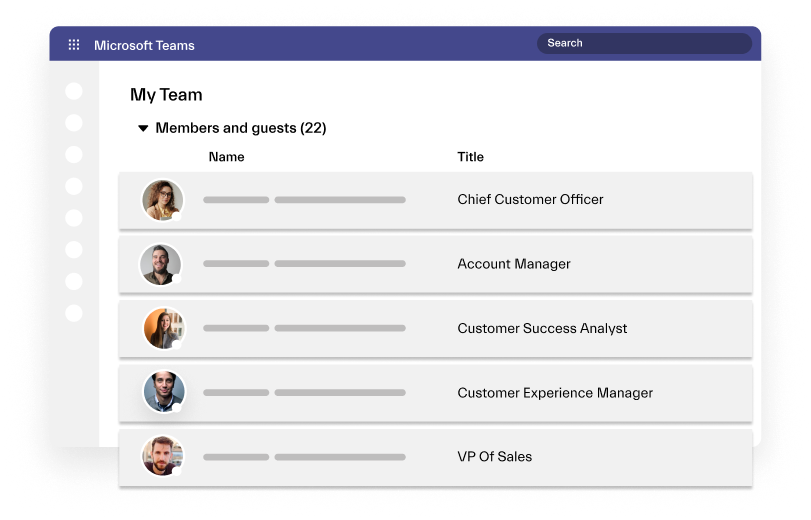
2. Build a template with it
Based on this team, you can create a template with nBold.
Open the nBold app in Microsoft Teams, click on +New Template and choose the team you just built. Configure governance policies in accordance to your IT requirements. You can set up Naming Convention for your teams, Approval Workflow for team creation, Audience Targeting so that only specific users could see and use the template, Permanent Ownership and Membership as well as Privacy Policies.
This template will be added to your own Template Catalog.

3. Set up the Customer Success solution
If you’d like to seamlessly integrate your CRM with Microsoft Teams for sales-to-CS handoff you can additionally set up Customer Success solution.
Choose the CRM you use (Salesforce, HubSpot, Pipedrive, etc.) and configure custom fields that would trigger team creation. That can be the deal stage or amount, for example.
→Download: Microsoft Teams & Salesforce Integration Guide
Then, whenever a deal/opportunity in your CRM will correspond to the settings you defined, it will trigger creation of a new team automatically with the structure, frameworks and the right people added by default.
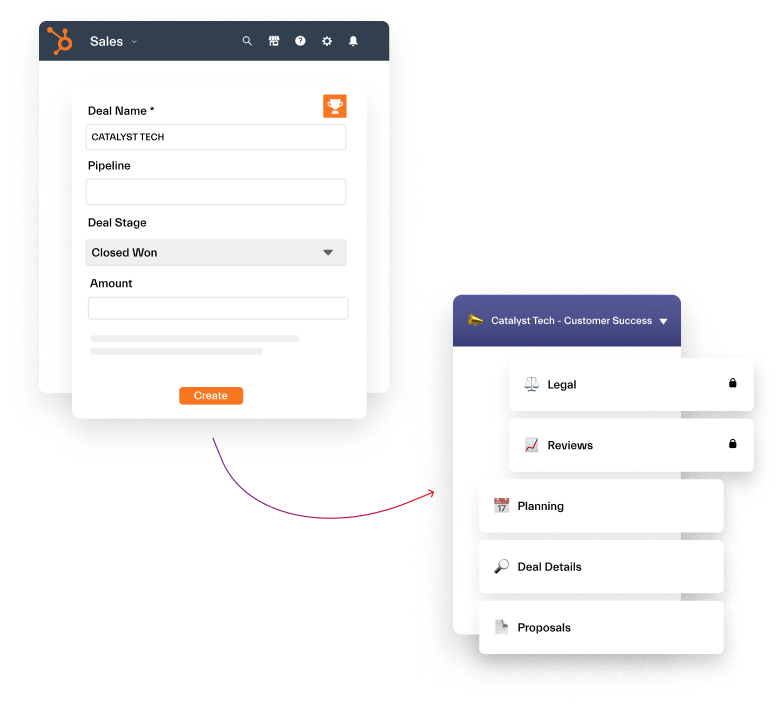
4. Collaborate on newly closed deals
Note that your team will be live: you will receive automatic CRM updates directly in Teams. For example, it can reflect changes in the deal stage, amount or a let your team know about a new task.
This way, you bring everyone together in the same workspace, giving them equal access to key information and opportunity to store CRM data in Microsoft Teams.
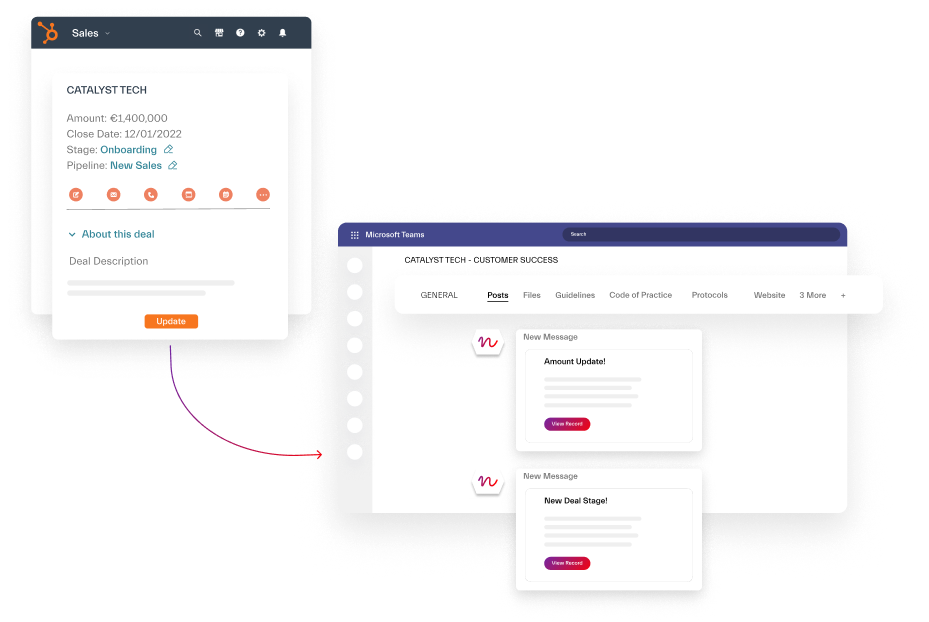
Learn more about Customer Success solutions
By following these steps, you can organize a seamless sales-to-costumer-success handoff and bring structure and consistency to the way your teams collaborate with each other.
Contact our team to see how you can benefit from the Customer Success solution by nBold.
